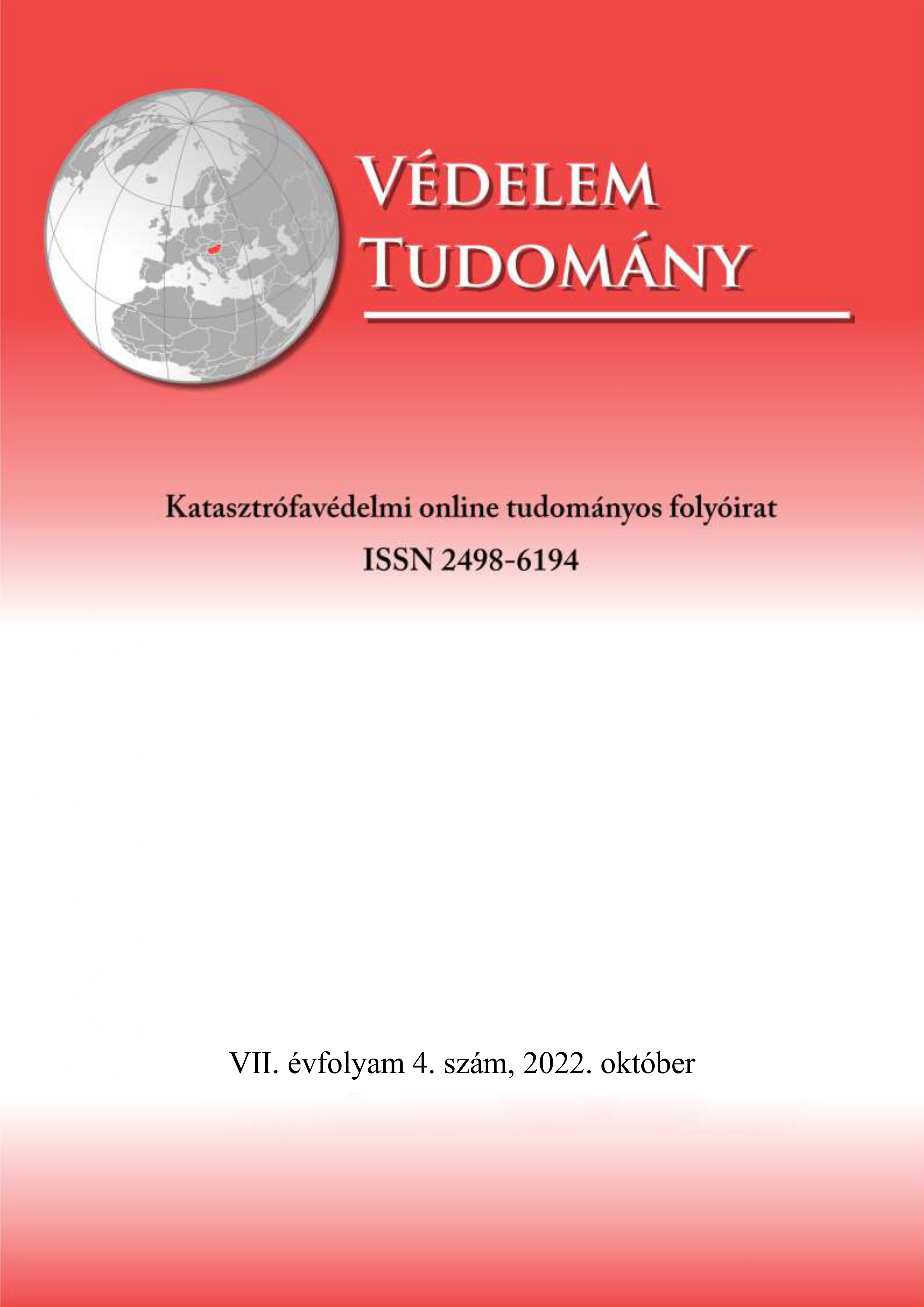Risk analysis of a reservoir as a vital system component
Abstract
Water is an essential element of our very existence. Nowadays, more and more attention is focused on ensuring the security of water and food supply. With the ever-growing demand for water, water is no longer a worthless, unrestricted free resource in much of the world. Due to the rapid increase of the demand for water, the water shortage in more and more areas can only be addressed through very complex water replenishment. It is also a major challenge in case of fighting against wildfires [1], especially during high fire danger periods [2]. The movement of water in nature is a periodic phenomenon, in contrast, social water demand is more even and less seasonal. In order to compensate the differences between the source side and the demand side, different water storage and water retention methods have been created, and one form of these methods is the storage of surface waters. Its works of art are reservoirs of various shapes and functions. New test methods (horizontal sorption) of water absorption by porous stone surfaces and effect of surface treatments have already been implemented [3]. The creation of technical facilities for storage, the maintenance and operation of storage facilities, and the utilization of water require significant production efforts [4]. Water storage makes it possible to satisfy water demands that change over time, and to replenish water resources. This is a good way to intervene against the unfavorable distribution of water resources. Water storage also provides protection against water damage and can help meet the
ever-growing energy demand.
References
Bodnár László: Az erdőtüzek oltóvízszállítási hatékonyságának növelése mesterséges víznyerőhelyek segítségével. In: Hausner, Gábor (szerk.) Szemelvények a katonai műszaki tudományok eredményeiből II. Budapest, Magyarország, Ludovika Egyetemi Kiadó (2021) 347 p. pp. 27-44.
Debreceni Péter – Pántya Péter: A fokozottan tűzveszélyes időszakok meghatározásának lehetőségei. Műszaki Katonai Közlöny, 29. (2019), 1., pp. 243–260.
Juhász Péter - Kopecskó Katalin: Introduction of a new testing method (horizontal sorption) for the in-situ analysis of water absorption by porous stone surfaces and effect of surface treatments. Central European Geology, 57. 2. (2014), pp. 217-228.
Nemes Dávid – Restás Ágoston: Drone application for supporting preventive flood management - case study of the Bódva reiver basin, Hungary. Védelem Tudomány, 6. 3. (2021), pp. 474-489.
Az 541/2013. (XII. 30.) Korm. rendelet a “létfontosságú vízgazdálkodási rendszerelemek és vízilétesítmények azonosításáról, kijelöléséről és védelméről”.
ANCOLD (2003), Australian National Committee on Large Dams, "Guidelines on Risk Assessment," October 2003.
Muhoray Árpád - Nagy Rudolf: A katasztrófák elleni védelem rendszere a létfontosságú infrastruktúrák biztonságáért. Rendészeti szemle. 58.4. (2010) pp. 3-18.
Morris, M. H., and Elliott, R. 2002. Risks and Reservoirs in the UK. HR Wallingford, RKLArup, CIRIA Water Group.
Mohai Ágota Zsuzsanna: Active fire safety on construction sites, Műszaki Katonai Közlöny XXVII. évfolyam, 2017. 4. szám, pp. 55-69.
ICOLD (2005), "Risk Assessment in Dam Safety Management: A Reconnaissance of Benefits, Methods and Current Applications," International Commission on Large Dams (ICOLD) Bulletin 130, 2005.
Elek Barbara: Ipari tározók veszélyelemzése és a kockázat csökkentésének lehetőségei. 2015. Szakdolgozat. Szent István Egyetem Ybl Miklós Építéstudományi Kar.
Cimer Zsolt - Hák Viktor - Kovács Gábor: Ipari iszaptározók biztonságtechnikája I-II, Munkavédelem és Biztonságtechnika. 3. és 4. szám. (2011) pp. 20-26. és pp.31-36.
Andersen, G. R. and Torrey, V. H., III. (1995). Function-based condition indexing for embankment dams. J. Geotech. Engrg., ASCE, 121(8), pp. 579–588.
Ambrusz József - Muhoray Árpád: A 2001. évi beregi árvíz következményeinek felszámolása, a kistérség rehabilitációjának megszervezése. Védelem Tudomány, 1.1. (2016), pp. 108-125.
Dede Károly - Detrekői Ákos - Szűcs László: A budapesti dunai partfalak mozgásvizsgálata. Geodézia és Kartográfia. (2002) 54 (10) pp. 39-44.
Mezei Daniella Ibolya - Kerekes Zsuzsanna: Szimulátorok alkalmazása a tűzvédelemben. Tűzoltó Szakmai Nap Konferenciakötet, 2016. pp. 159-163
Richárd Pető: “Security Issues of Smart City Construction” Smart, Sustainable And Safe Cities Conference 2020; Interdisciplinary Description of Complex Systems: INDECS, vol. 18 No. 3,, 2020.;
Nagy Rudolf: A kritikus infrastruktúrák elleni lehetséges radiológiai terrortámadások. Magyar Rendészet. 16.évf. 6.szám. (2016) pp 145-153.
Richárd Pető: Some Safety and security issues of UAVS. Acta Technica Corviniensis – Bulletin of Engineering e-ISSN: 2067-3809; http://acta.fih.upt.ro/pdf/archive/ACTA-2017- 3.pdf pp. 55-60.
Mohai Ágota Zsuzsanna: A tűzjelző berendezések riasztási hatékonysága. Műszaki Katonai Közlöny XXVII. évfolyam, 2017. 3. szám, pp. 20-37.
Wilhelm G. Coldewey: Emergency plannning for tailing dams. UNECE Workshop on the safety of tailing management facilities. Workshop presentations, session I. 12-14. november 2007, Jerevan.




